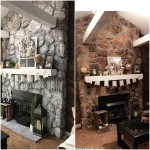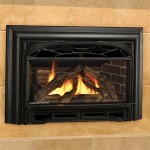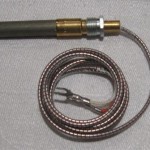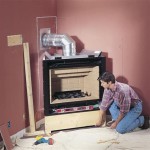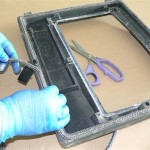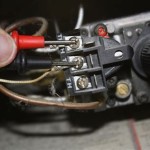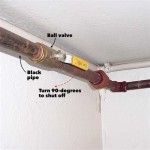How To Paint Brass Fireplace Doors White
Brass fireplace doors, while often chosen for their traditional aesthetic, can sometimes clash with evolving interior design preferences. Painting the brass doors white is a cost-effective way to update a fireplace and integrate it seamlessly into a modern or brighter decor scheme. This process, while straightforward, requires careful preparation and execution to ensure a durable and visually appealing finish. This article provides a comprehensive guide on how to successfully paint brass fireplace doors white.
Preparation: The Key to a Lasting Finish
Proper preparation is the most critical step in painting brass fireplace doors. Neglecting this stage can result in poor adhesion, chipping, and an overall unsatisfactory finish. The preparation process includes cleaning, sanding, and priming the brass surface. Start with a thorough assessment of the doors. Look for any existing damage, such as rust, scratches, or pitting. These issues will need to be addressed before proceeding with the painting process.
The initial step is cleaning. Use a degreaser or a mixture of warm water and dish soap to remove any dirt, grease, or residue from the brass surface. This is crucial because paint will not adhere properly to a dirty or greasy surface. Use a scrub brush or sponge to thoroughly clean all areas of the doors, paying particular attention to corners and crevices. Rinse the doors thoroughly with clean water and allow them to dry completely. Drying can be accelerated with a clean, lint-free cloth.
After cleaning, sanding is the next crucial step. Brass is a smooth metal, and paint needs a textured surface to grip onto effectively. Use a medium-grit sandpaper (around 120-grit) to scuff up the entire surface of the doors. Apply consistent pressure and work in even strokes to create a uniform surface. Sanding will create a slight roughness that will allow the primer to adhere properly. Once the entire surface has been sanded, wipe away the sanding dust with a tack cloth or a damp cloth. Ensure all traces of dust are removed, as any remaining dust will interfere with the primer's adhesion.
Priming is the final and equally important step in the preparation phase. Apply a metal-specific primer to the sanded brass surface. Choose a primer that is designed for non-ferrous metals, as these primers contain etching agents that will improve adhesion. Apply the primer in thin, even coats, following the manufacturer's instructions. Avoid applying too much primer in one coat, as this can lead to drips and runs. Allow the primer to dry completely, as specified by the manufacturer. Once the primer is dry, lightly sand the surface with a fine-grit sandpaper (around 220-grit) to smooth out any imperfections and provide an even surface for the paint. Wipe away any sanding dust before proceeding to the painting stage.
Choosing the Right Paint and Application Technique
Selecting the appropriate paint is crucial for achieving a durable and aesthetically pleasing finish on brass fireplace doors. The paint must be heat-resistant and specifically formulated for metal surfaces. High-temperature paints designed for stoves or engines are good options, as they can withstand the heat generated by a fireplace. Opt for a white paint specifically made for metal, preferably in a spray paint format for ease of application and a smooth, even finish.
Acrylic latex paints are also a viable option, but they require a heat-resistant additive to be mixed in. Ensure the additive is compatible with the chosen paint. Avoid using oil-based paints, as they can yellow over time and may not be as heat-resistant as other options. Consider the desired sheen. A matte or satin finish is often preferred for fireplace doors, as it hides imperfections better than a glossy finish. However, a semi-gloss or gloss finish will be easier to clean. Before starting the painting process, ensure the surrounding area is adequately protected. Lay down drop cloths or newspapers to prevent paint from splattering onto the floor or nearby surfaces.
Apply the paint in thin, even coats, using a spray paint can or a high-quality brush or roller, depending on the type of paint chosen. If using spray paint, hold the can about 8-10 inches away from the surface and move it in a steady, back-and-forth motion. Avoid holding the can in one place for too long, as this can cause drips and runs. If using a brush or roller, apply the paint in smooth, even strokes, overlapping each stroke slightly to ensure complete coverage. Allow each coat of paint to dry completely before applying the next coat, following the manufacturer's instructions for drying time. Apply multiple thin coats rather than one thick coat. This will result in a more durable and even finish.
Inspect the doors after each coat has dried. Look for any imperfections, such as drips, runs, or uneven coverage. If necessary, lightly sand the surface with a fine-grit sandpaper to smooth out any imperfections before applying the next coat. Once the final coat of paint has dried completely, allow the doors to cure for the recommended time, as specified by the paint manufacturer. Curing allows the paint to fully harden and become more durable.
Reassembly and Aftercare
After the paint has fully cured, carefully reassemble the fireplace doors, ensuring all hardware is securely fastened. Before using the fireplace, allow the paint to fully cure for the recommended time, as specified by the paint manufacturer. This curing period is essential for the paint to reach its maximum hardness and heat resistance. During this time, avoid touching or handling the doors excessively to prevent damage to the fresh paint. Start with small fires for the first few uses. This allows the paint to gradually acclimate to the heat, reducing the risk of cracking or blistering.
To maintain the painted finish, clean the doors regularly with a soft, damp cloth. Avoid using harsh chemicals or abrasive cleaners, as these can damage the paint. If necessary, use a mild soap and water solution to remove stubborn dirt or grime. Periodically inspect the doors for any signs of damage, such as chips or scratches. Touch up any damaged areas with the same paint used for the initial application. This will help to prevent rust and maintain the overall appearance of the doors.
By following these steps carefully, transforming brass fireplace doors to a white finish becomes a manageable DIY project that revitalizes the entire fireplace aesthetic. Careful planning and execution ensure a long-lasting and visually appealing result, seamlessly integrating the fireplace into any desired interior décor.

How To Spray Paint A Brass Fireplace Insert Erfly House

Painting A Brass Fireplace Diy Within The Grove

How To Spray Paint A Brass Fireplace Insert Erfly House

How To Update Fireplace Brass
Fireplace Makeover With High Heat Spray Paint

Brass Fireplace Update East Coast Creative

Painting A Brass Fireplace Diy Within The Grove

How To Spray Paint A Brass Fireplace Insert Erfly House

1970s Fireplace Makeover Before And After

Painted Fireplace Doors 6 Steps With S Instructables
Related Posts

